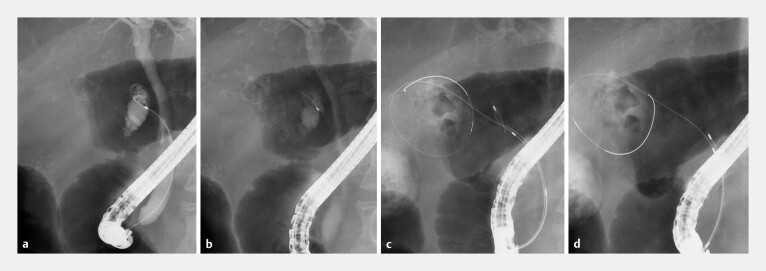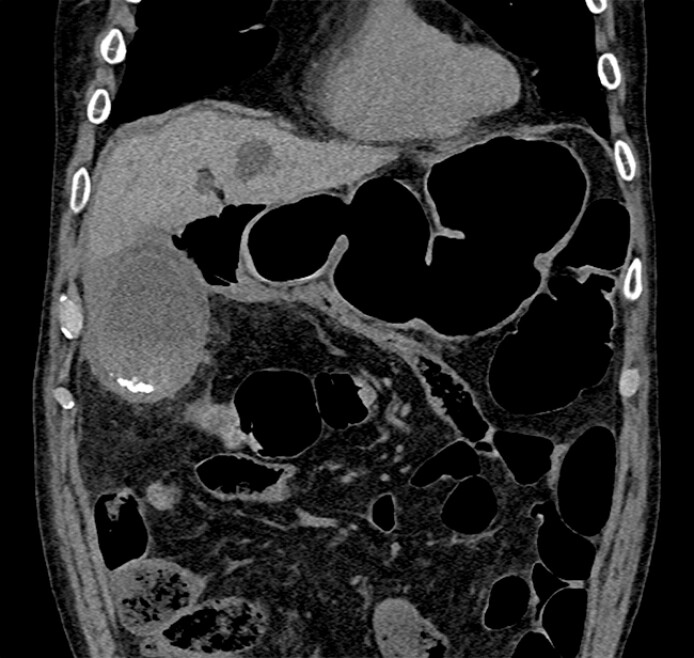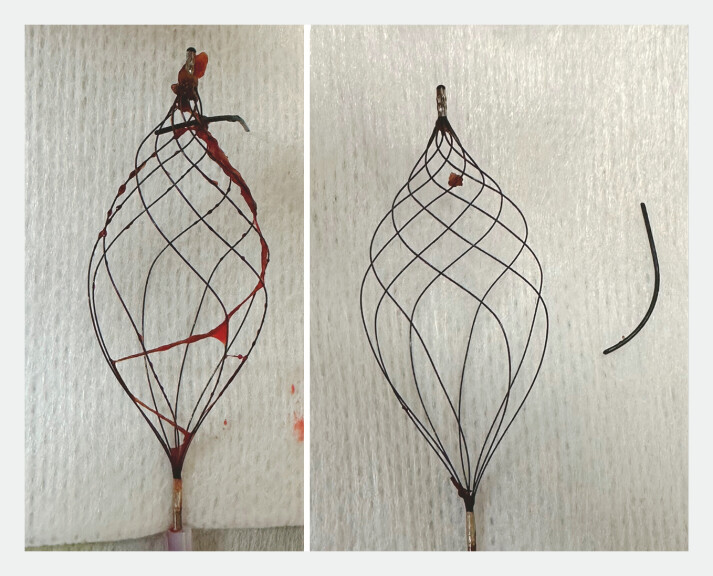Endoscopy. 2024 Dec; 56(Suppl 1): E939–E940.
Retrieval technique for a sheared guidewire remnant in the gallbladder duct using a novel basket catheter
, Dr., , MD, , Dr., , Dr., , Dr., , and
Sho Ishikawa
1Department of Gastroenterology & Metabology, Ehime University Graduate School of Medicine, Toon, Japan
Mitsuhito Koizumi
1Department of Gastroenterology & Metabology, Ehime University Graduate School of Medicine, Toon, Japan
Masahito Kokubu
1Department of Gastroenterology & Metabology, Ehime University Graduate School of Medicine, Toon, Japan
Yusuke Okujima
1Department of Gastroenterology & Metabology, Ehime University Graduate School of Medicine, Toon, Japan
Yuki Numata
1Department of Gastroenterology & Metabology, Ehime University Graduate School of Medicine, Toon, Japan
Teru Kumagi
1Department of Gastroenterology & Metabology, Ehime University Graduate School of Medicine, Toon, Japan
2Post Graduate Medical Education Center, Ehime University Hospital, Toon, Japan
Yoichi Hiasa
1Department of Gastroenterology & Metabology, Ehime University Graduate School of Medicine, Toon, Japan
1Department of Gastroenterology & Metabology, Ehime University Graduate School of Medicine, Toon, Japan
2Post Graduate Medical Education Center, Ehime University Hospital, Toon, Japan
Correspondence Mitsuhito Koizumi, MD Department of Gastroenterology and Metabology, Ehime University Graduate School of Medicine, 454 Shitsukawa, Toon, Ehime 791-0295Japan,
[email protected] Copyright The Author(s). This is an open access article published by Thieme under the terms of the Creative Commons Attribution License, permitting unrestricted use, distribution, and reproduction so long as the original work is properly cited. (https://creativecommons.org/licenses/by/4.0/).
This is an open-access article distributed under the terms of the Creative Commons Attribution License, which permits unrestricted use,
distribution, and reproduction in any medium, provided the original work is properly cited.
Endoscopic transpapillary gallbladder drainage (ETGBD) is one of the most difficult endoscopic retrograde cholangiopancreatography (ERCP)-related procedures to perform, as it often causes adverse events in the gallbladder duct
1
. Retrieval is technically difficult if a sheared guidewire remnant remains in the gallbladder duct. Herein, we present a case in which a sheared guidewire remnant was successfully retrieved from the gallbladder duct using a novel basket catheter.
A 78-year-old man was admitted to our hospital with acute cholecystitis (
). He was promptly treated using antibiotics and ETGBD. While manipulating the guidewire
in the gallbladder duct, the guidewire became kinked, broke off, and remained in the duct (
a, b
). We attempted to retrieve the sheared guidewire using a
RASEN 2 basket catheter (Kaneka Medical, Osaka, Japan) that was inserted along the guidewire,
deployed into the gallbladder duct, and rotated clockwise to confirm that the guidewire remnant
was inside (
c
). Once we closed the basket, we were able to firmly grip the
guidewire and pull it out of the patient through the channel of the endoscope (
d
,
).
Computed tomography image showing acute cholecystitis on the patient’s day of admission.
Fluoroscopic images of endoscopic transpapillary gallbladder drainage procedure.
a
Guidewire manipulation in the gallbladder duct.
b
Sheared guidewire remnant in the gallbladder duct.
c
A basket catheter was inserted into the gallbladder duct along the guidewire.
d
Successful grasping and retrieval of the sheared guidewire remnant.
The sheared guidewire remnant and basket catheter.
There have been few reports in the literature concerning techniques for retrieving residual guidewires, mostly using biopsy forceps during endoscopic ultrasound or ERCP
2
3
. To our knowledge, no studies have yet described remnant guidewire retrieval in the gallbladder duct using a basket catheter. This new type of basket catheter has a unique shape and rotational mechanism that may be useful not only for removing bile duct stones but also for retrieving foreign bodies in narrow areas such as the gallbladder duct (
Video 1
).
Endoscopy_UCTN_Code_TTT_1AR_2AG
Footnotes
Conflict of Interest The authors declare that they have no conflict of interest.
E-Videos
is an open access online section of the journal
Endoscopy
, reporting on interesting cases and new techniques in gastroenterological endoscopy. All papers include a high-quality video and are published with a Creative Commons CC-BY license. Endoscopy E-Videos qualify for
HINARI
discounts and waivers and eligibility is automatically checked during the submission process. We grant 100% waivers to articles whose corresponding authors are based in Group A countries and 50% waivers to those who are based in Group B countries as classified by Research4Life (see:
https://www.research4life.org/access/eligibility/
).
This section has its own submission website at
https://mc.manuscriptcentral.com/e-videos
.
References
1.
Nakahara K, Sato J, Morita R et al.Incidence and management of cystic duct perforation during endoscopic transpapillary gallbladder drainage for acute cholecystitis.
Dig Endosc. 2022;34:207–214. [Abstract] [Google Scholar]2.
Hirakawa N, Tonozuka R, Itoi T. Endoscopic retrieval of a sheared guidewire remnant from walled-off necrosis.
Dig Endosc. 2021;33:e104–e105. 10.1111/den.13987. [Abstract] [CrossRef] [Google Scholar]3.
Hirakawa N, Mukai S, Itoi T. Endoscopic retrieval of a sheared guidewire remnant with microbiopsy forceps from a peripheral intrahepatic bile duct.
Dig Endosc. 2023;35:e103–e104. 10.1111/den.14597. [Abstract] [CrossRef] [Google Scholar]






